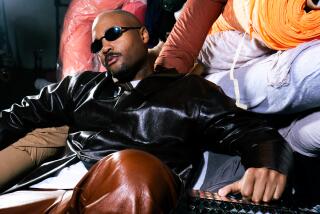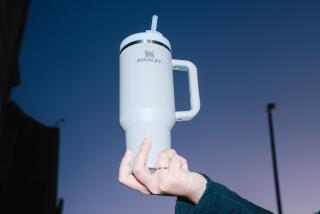Design Imparts Personality Through Subtle Visual Stimulation : What Goes on the Outside of Package Is as Critical as What Goes Inside
- Share via
It’s in the swirl of the letters on Coca-Cola cans, the lingering coffee drop from the Maxwell House cup, the casseroles that grace the trim white Stouffer’s Lean Cuisine boxes.
Classic package designs, the kind that stand out among the 12,500 items in the average supermarket, all have one key ingredient--personality--which is conveyed through subtle visual stimulation, industry experts say.
“Packaging has become a lot more than just a container to hold a powder or a liquid,” said Richard Klein, who directs his own graphic consulting firm in Los Angeles. “It has to be a billboard for a product--it has to tell the public what the product is, what it’s used for and what’s in it.”
Packages also have to tell consumers who they are: If you buy a product with this look, you must be chic, or macho , or a solid citizen. Since 80% of all buying decisions are made on the spot, package psychology has become a critical step in product development.
Intensive Market Research
Today, before putting pencil to paper, designers conduct intensive market research to identify the product’s likely buyers and determine what image those buyers fancy.
“We rely on what’s called psychographics, the make-up of the specific consumer,” said John Diefenbach of Landow Associates, an industry giant based in San Francisco.
Psychographics are a cross between demographics and color-me-beautiful: Tell me your age, sex and income, and I’ll tell you what catches your eye.
“For example, color can slide up and down the economic scale,” Diefenbach said. “Bright red says budget; burgundy says gourmet. When you go from primary colors to deeper tones, for some mysterious reason, you signal more elegance.”
Color, shape, typeface and logo, the four horsemen of package design, together determine a product’s personality.
Of the four, shape is the hardest to alter. Most bottles, boxes and cans have to be packaged in standard sizes that are easy to ship and stack. “The challenge for the designer,” Klein said, “is to take something in a stock package and make it unique and outstanding.”
Brut Bottle a Success
In rare cases, an odd-shaped package has contributed to a product’s success; a notable example, he said, is the long-necked Brut cologne bottle.
Typeface is something consumers rarely notice, but designers have found that the look of the letters reinforces the message behind the name.
“Typography should emulate what the name of your product is saying,” Klein pointed out. “If your product is called ‘Stainless Steel Polish,’ I would be reluctant to do it in Old English typeface; instead, I’d use chrome-looking type.”
“You’d be surprised how much trouble is spent just shaving a millimeter off standard typeface,” Diefenbach said.
Color is the most stimulating element of package design and the one designers can experiment with most. But Diefenbach warned that colors speak new languages in the world of cereals and detergents.
“It’s still true that reds are hot and blues are cool, but there are exceptions,” he said. “You can’t just say, ‘Let’s warm this up with a red,’ because red has many meanings. Red on a soft drink can means cola. Red and yellow makes people think of fast foods.”
Black, White Tricky
Black and white are especially tricky, he added. “Black can be funereal or it can be sophisticated,” he said. “White used to be associated with generic products; now, with Miller Lite and Stouffer’s Lean Cuisine, white means diet. “
The choice of color often is determined by whether men or women are the primary buyers, Klein said. “Packaging for cosmetics tends to use pastels, pinks and lavenders; automotive products use more masculine tones: redder reds, heavier use of blues and blacks.”
The product’s logo is the most powerful element of any package design. Certain logos are the stuff of legend: Morton Salt’s little girl under the umbrella, the white dove on Bird’s Eye vegetables, the clenched fist on Arm & Hammer baking soda.
Over time, a successful product logo builds up what Diefenbach called equity, the kind of instant recognition that is worth an estimated $100 million in new-product advertising.
Giving a face lift to a tried-and-true design poses special challenges, as illustrated by two recent Landow projects for Coca-Cola and Jergens lotion.
Company Branched Out
Coca-Cola is “a big one-product company that suddenly branched out,” Diefenbach said. “Coca-Cola had one product for 100 years; now, it has seven.”
When that happens, designers must aim for what the industry calls “brand management”--”you have to manage the brand and the logo so you don’t lose its equity,” he said. Landow did this by keeping the traditional red-and-white logo and adding subtle traces of gold (for caffeine-free Cokes) and silver (for diet Cokes).
With Jergens, Landow had a tough assignment: change the look enough to attract new, younger customers but not enough to alienate loyal, older customers.
“We refined the typeface and then we added three brush strokes of color beneath the logo,” Diefenbach said. “It’s a freer, more in, more California look that tells younger customers: ‘There’s been a change. This is no longer your grandmother’s hand cream.’ ”






